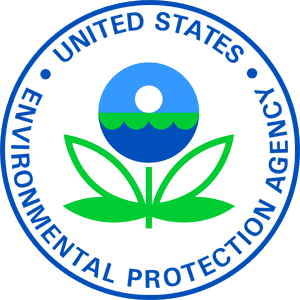 Whereas until recent years the problems of pollution and nuisances were distributed among different administrative authorities, which resulted in a proliferation of regulations and a lack of coordination, the United States witnessed an administrative consolidation. In most countries concerned by an environmental policy, we saw the creation of central administrations responsible for the environment then considered as a whole.
Whereas until recent years the problems of pollution and nuisances were distributed among different administrative authorities, which resulted in a proliferation of regulations and a lack of coordination, the United States witnessed an administrative consolidation. In most countries concerned by an environmental policy, we saw the creation of central administrations responsible for the environment then considered as a whole.
The Ministry of the Environment in France and the Environment Protection Agency in the USA are two good examples. Created in 1970, the E.P.A. is a large federal agency headed by an administrator. Its roles are those of a central defense administration of the environment, namely the establishment and application of preservation of the living environment, research on pollution and means of control, information on nuisances, technical assistance in control antipollution, the suggestion of new measures to the president and the Council on Environmental Quality.
The Clean Water Act of 1972 gives this central body great powers in water pollution control policy. These powers are are situated on two levels:
- on the one hand, the EPA is only authorized to take a certain number of decisions to be followed by state authorities
- on the other hand, the EPA is empowered to fill the gaps in the authorities state, possibly replacing them
Centralization is therefore characterized by decision-making power and substitute power of the federal administration.
The decision-making powers of the EPA
The Clean Water Act reflects Congress’ mistrust of capacity States to obtain an improvement in water quality. Whereas before all standards were defined locally, now they are mainly developed at the federal level. Discharge limitation standards which constitute the main innovation of the 1972 text are intended as uniform standards, defined by the E.P.A. and obligatorily implemented by the States.
It should also be noted that it exists alongside the E.P.A. the “Council on Environmental Quality”, created in 1969, formed of three members and directly attached to the president. Unlike the E.P.A., it does not have any administrative power and only fulfills an advisory role.
American Law and the Fight against WATER Pollution qualifies as guide standards. There are therefore federal, the standards of limitations of effluents, the performance standards set for new industries, pre-treatment standards before discharge into a public treatment plant and ocean discharge criteria set out in section 403.
The purpose of setting these standards at the federal level is to prevent any possibility of compromise between industrial firms and local authorities concerned with the economic power of the state. Conversely such system may not take into account local specificities, but the legislator stressed the need for close collaboration between agencies for the environment and the federal agency. This collaboration finds its more perfect expression in the way in which discharge permits are envisaged.
Section 402 of the law provides that it belongs to the EPA to authorize rejections meeting applicable standards and levels. However this power can be delegated to the relevant state authorities, i.e. to state agencies responsible for environmental issues. This power will only be delegated to the states if their anti-pollution programs have been approved by the E.P.A. which, in fact has a permanent veto over individual licenses and state programs for water.
The industrialists tried to contest, before American courts, the power of the E.P.A. to set individual standards applicable in discharge permits. Among the jurisdictions which have had to know such actions, most supported the federal agency and interpreted the law in the direction most favorable to the strengthening of federal powers.
Regarding domestic pollution, the role of the federal agency is at least as important since it is up to him to grant the credits of financing of the constructions necessary for the purification of water. The EPA distributes the funds annually allocated by the Congress according to the requests made to it by municipalities, states or agencies local. The funds are only granted if the structure to be built is able to meet the conditions for removing pollutants set out in the text (secondary treatment of discharges before 1983). To be accepted, the project must be given priority according to established water programs by state authorities.
Despite the complexity and scope of the tasks, despite also the possibilities of pressure on it, the Environmental Protection Agency is the vital center development and implementation of the American policy in the fight against pollution of river and maritime waters. The powers recognized by current legislation are enormous and do not allow it only to impose constraints on state authorities and polluters individual, but still to short-circuit the state authorities by substituting for them when they turn out to be weak or too lax.